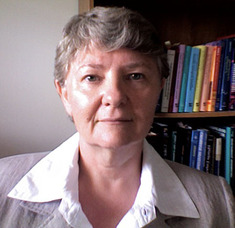It’s Hard to Get Help for Persisting Pain

If you casually mention you have back or neck pain in a group of people, more often than not you will hear stories of treatment that made their pain feel worse, rather than better!
People that have ongoing pain have a hard time getting the right care to help them recover. Most people don’t know that people do recover from persisting pain, and that a modern, science-informed understanding of pain is what helps people to get on the right path.
Many amazing pain discoveries have been made over the last 20 years, and they have opened up powerful and scientific treatment opportunities. They should mean that people should expect to get better treatment for their painful problems.
We hope that times have passed of treatment that makes your pain worse, or leaves you feeling like you have “failed” because your pain isn’t changing.
Modern breakthroughs in the understanding of pain have revealed that it’s almost impossible to pinpoint one “cause” of pain, even if you have a change to the bone or soft tissues of your spine that can be seen on a scan or x-ray.
Knowing about your nervous system, the role it plays in pain and the many things that can help it become less sensitive is critical for people to get better from ongoing pain.
We’re honored to have one of the pioneers of modern pain treatment, Diane Jacobs, writing for PainChats.
Diane has been a physiotherapist for 40 years, and in that time she has developed Dermoneuromodulating, her own system of treating pain based on her thorough understanding of the nervous system, particularly the nerves in the skin. Diane has written 3 posts for us in which she walks you through how she would go about treating Alex, a man with persisting neck pain.
This is part 1 of a 3-part series where you can read about the way Diane helps her patients in the clinic. Her method is focused on educating patients about their bodies and experiencing new sensations that inform them about the nature of the nervous system and how its sensitivity can be changed.
Alex, a man in his late 30’s, walks into Diane’s treatment room for his first visit. As he walks through the door, his demeanor expresses a combination of resignation with some hopeful curiosity.
Getting Started with Treating Pain
“Hi Alex, welcome, it’s good to meet you,” I say.
I look at him, and smile as we shake hands. I invite him to sit.
I get a file started, which is the minimum medico-legal requirement. I make sure I have the basics; contact info, date of birth and the correct spelling of his name. I then close it, put down the pen, and focus on him.
I want Alex to know he has my full and warm attention.
I want my opening invitation for him to speak to be open-ended, so that he feels he has control over his story.
I ask him, “Why have you come to see me?”
He says, “…. Well, my wife sent me. She was talking with someone whose husband came to see you and thought maybe you might be able to help me.”
Ever since I watched Peter O’Sullivan interact with people with chronic pain a few years ago, I have replied with some version of the following: “I sure hope so. What is your story?”

His story is familiar – he has ongoing neck pain after a mishap where he fell off his mountain bike two years ago, while on holiday. There’s been no change for the better as far as pain is concerned over those two years. I hear all about damaged discs, limited activities, money spent on different kinds of pillows and multiple different practitioners, but… no help with the pain.
I ask him, “Has your life changed at all since this occurred?”
“Yes!” he says, and he describes how he used to love the feeling of carefree riding but now his neck hurts pretty much all the time, even when all he does is just go out briskly walking.
I ask, “Do you feel a bit boxed in by all that has happened in your life since you fell?” And he says, “Yes, actually…” and remarks that he feels he will never be able to do anything sporty again.
Myth Busting Scans and X-rays
Alex has brought me in a copy of his x-ray report and MRI, with findings that are pretty normal and common. I look at them carefully, then hand them back to
“It’s good news really – they have ruled out anything really bad. So what we’re left with is a pain problem, not a damage problem. You might have been left with the impression that your muscles and bones and joints are causing your pain, but there are lots of research studies show us that findings like these are completely normal in most people, including most people who have no pain at all.”
“I would like to talk to you about your nervous system, if that’s OK, because that’s where pain is actually happening, especially after your tissues have long since healed. Would that be all right?”
Alex says yes, and we continue to talk about what nerves do and don’t like, how they create pain and how to help them change.
Teaching people in pain how to help themselves

My main job is to teach people like Alex how to be their own therapist, reassure them they aren’t broken or damaged and that they can go ahead and do whatever they want with their tough, rubbery and resilient bodies.
I use manual therapy techniques that help their nervous system to adapt and move easier, by treating them sensitively and with good knowledge of their nervous system.
If people can move effortlessly without pain after our session, and I am sure they understand that movement is good for their nerves and for them, and they have some easy effortless movement homework strategies to use, I let them know they won’t need to come back.
If they still have a felt sense of pain or stiffness, but are a good percentage better than they were prior to being treated, I let them know that it takes about 3 days for the nervous system to change fully, because physiological changes like ion channel turnover take that long to complete, but not to worry and to keep moving because “motion is lotion”.
I tell them they will feel better in one or more of three ways: Less intensity of pain on movement, less frequent pain, and/or it won’t last as long.

As a therapist, I should only be a catalyst for someone’s recovery. In a chemical reaction, a catalyst helps a reaction take place, but once the reaction has occurred, the catalyst leaves no trace of itself behind. I take great pains to set up treatment encounters that allow people to remain independent of further treatment.
I always give people the option to make another appointment but make it clear that it’s their choice, that they know their own body better than anyone else. If they don’t think they’ll need another one, I let them know they are always welcome to come in again should they get into another pain problem. Usually, they don’t feel the need to – instead they send new people, so I’m never short of work.
Diane Jacobs has been a physical therapist since 1970, and has used manual therapy to treat people with pain problems since the 80’s in her solo practice. In 2005 she helped to found the Canadian Physiotherapy Association’s Pain Science Division (PSD) and served on it until 2014.
In 2016 Diane published DermoNeuroModulating, a book which combines pain science awareness, clinical reasoning, and manual therapy strategies for pain. In addition to teaching workshops internationally, she owns and operates Sensible Solutions Physiotherapy in Weyburn, Saskatchewan, Canada, and is active online.



 How to Exercise with Chronic Pain Step 1: Get Started
How to Exercise with Chronic Pain Step 1: Get Started
